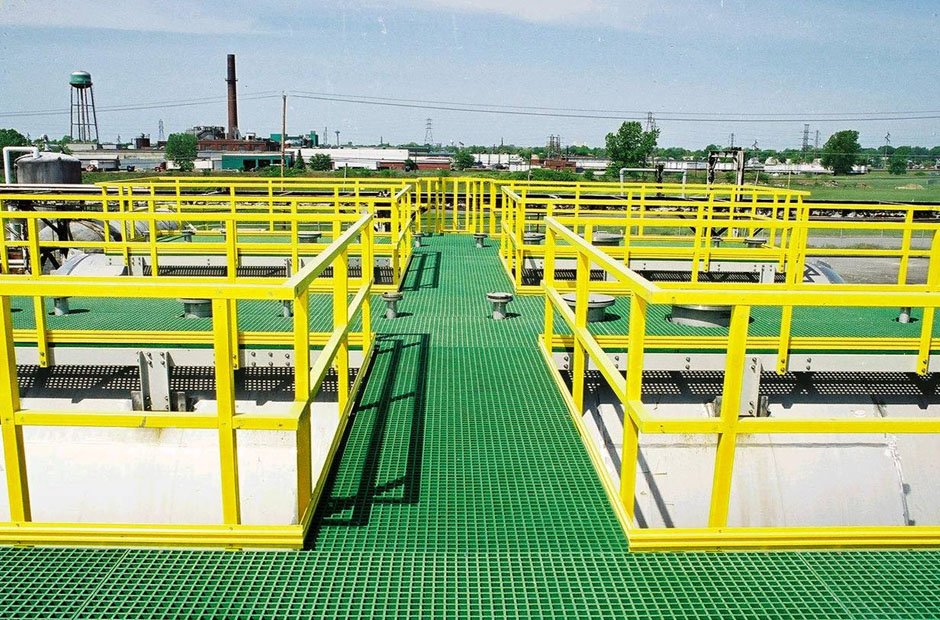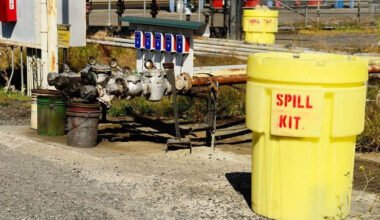As industrial technology advances, companies are putting greater emphasis on safety, durability, and low maintenance in infrastructure design. Within this context, FRP Grating (Fiberglass Reinforced Plastic Grating) has emerged as a modern alternative to traditional steel. From chemical plants to seaports, from wastewater facilities to power systems, FRP grating is transforming how we build and maintain industrial flooring and platforms.
1. What Is FRP Grating?
FRP (Fiber Reinforced Plastic) is a composite material made by combining fiberglass with thermosetting resin, resulting in a product that is both strong like metal and corrosion-resistant like plastic. Compared with conventional steel grating, FRP grating is significantly lighter yet offers impressive strength, chemical resistance, and insulation. It can be molded into various sizes, shapes, and colors, providing flexible installation options for all kinds of projects.
2. Key Advantages of FRP Grating
Corrosion Resistance and Low Maintenance
Steel grating corrodes easily in acidic or marine environments, requiring regular replacement and repainting. FRP grating, on the other hand, performs reliably in environments exposed to seawater, chemical fumes, and industrial wastewater — saving both time and long-term maintenance costs.
Lightweight and High Strength
With only one-quarter the density of steel, FRP grating can still bear substantial loads. Its lightweight nature simplifies handling and installation, especially in elevated or confined spaces where cranes or heavy machinery are impractical.
Superior Safety Features
FRP is non-conductive, non-slip, and fire-retardant — essential qualities for applications in power plants, offshore platforms, and chemical facilities. The surface can be produced with grit or concave textures for enhanced slip resistance, ensuring a safer working environment.
Excellent Aesthetics and Weather Resistance
FRP grating can be customized in multiple colors (yellow, green, gray, etc.) for zoning and visual clarity. Its UV- and weather-resistant coating ensures that the grating remains clean, glossy, and vibrant even after years of exposure.
3. Typical Applications
FRP grating has evolved from niche use to mainstream industrial adoption, appearing in diverse sectors such as:
Chemical plants: drainage covers, operating platforms, and tank walkways;
Marine and port projects: dock walkways and gangways resistant to saltwater corrosion;
Wastewater treatment: anti-slip inspection platforms and trench covers;
Power and energy: insulated flooring and access systems;
Architecture and public facilities: park boardwalks, observation decks, and decorative structures.
4. Choosing a Reliable FRP Grating Supplier
To fully benefit from the advantages of FRP, it’s vital to partner with a professional FRP Grating Supplier.
A reputable supplier can offer multiple types of FRP gratings — molded, pultruded, or flame-retardant — along with comprehensive customization services such as tailored resin systems, surface treatments, and panel dimensions. Trusted manufacturers are typically certified under international standards (ISO, ASTM, BS) and provide structural design assistance, ensuring that each product meets required load and safety criteria.
5. The Future: Toward Greener and Smarter Manufacturing
As sustainability becomes a global priority, FRP production is moving toward more eco-friendly methods. Some manufacturers are now developing recyclable resin systems and solvent-free processes, integrating digital monitoring to ensure consistent quality. This trend points to a future where FRP materials play a key role in green, intelligent manufacturing.
In the coming years, FRP grating won’t merely serve as a substitute for steel — it will become a core material in smart and sustainable infrastructure. Its lightweight strength, corrosion resistance, and long service life make it an integral part of the lightweight revolution shaping modern industry.



